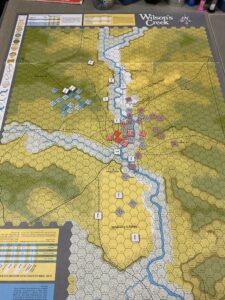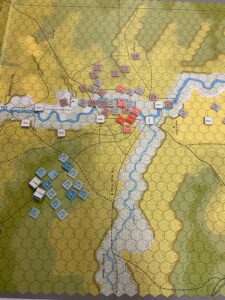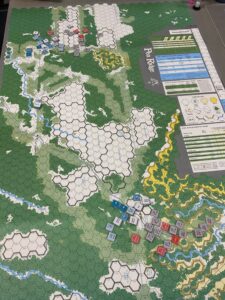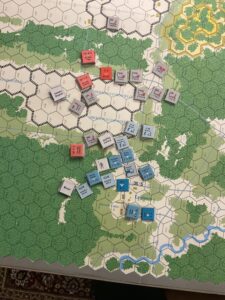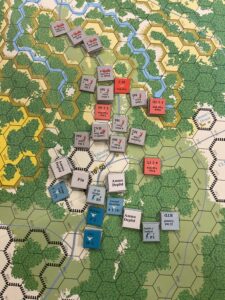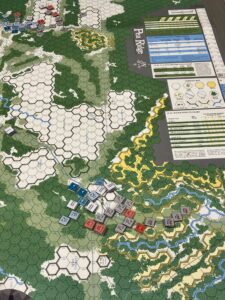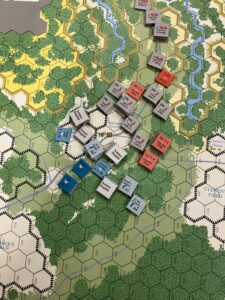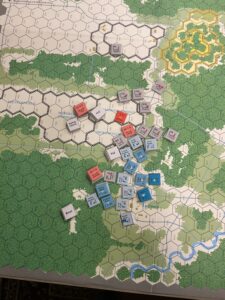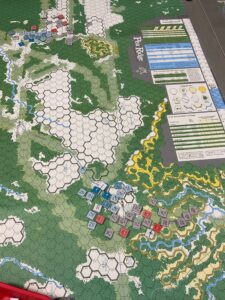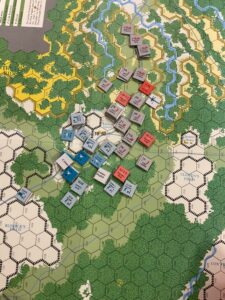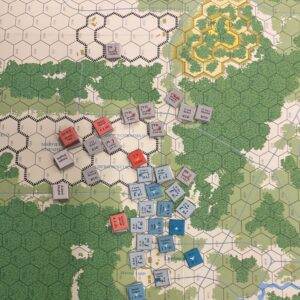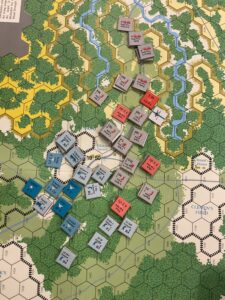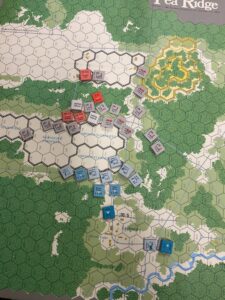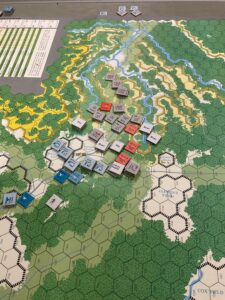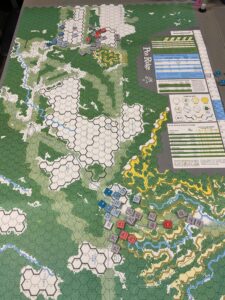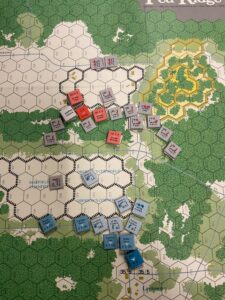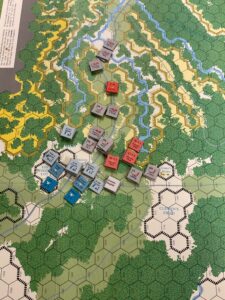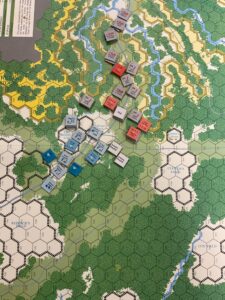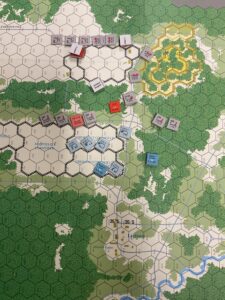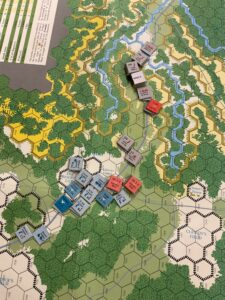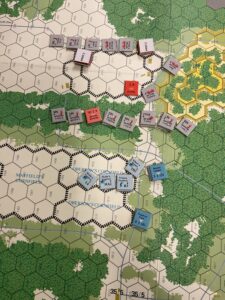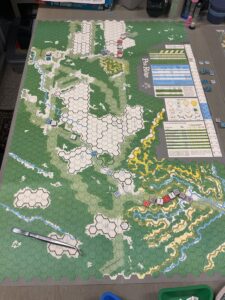Started Wilson’s Creek, one of the earliest in the Great Battles Of The American Civil War Series (GBACW), which appeared in Strategy & Tactics Magazine way back in 1981.
What is really scary is that my first and only previous play of the game was way back in 1981.
The exclusive game rules are mercifully short. However, they significantly shape the course of play.
The Confederates start the game “encamped”, activated either individually by “spotting” an advancing Union unit when it comes within three hexes, or by a 2xD-6 roll for the entire force beginning Turn 3. In either case, the spotting unit(s) or entire Confederate force must then take individual morale checks.
Given the relatively low morale of many Confederate units, the result can only be characterized by-the-now-over-used word, “Mayhem”. Routing units retreat the usual three hexes. Given the density of the Confederate bivouac, the army becomes a rabble. To compound matters, brigade commanders must also make morale checks (morale level four), and can also rout. From my reading of the rules, they cannot self rally. This puts a real burden on the division commanders.
To make things even more interesting, the battlefield terrain is hilly and covered with brush, which limits fields of fire (units can fire through two hexes of brush into a target) and movement (two movement points per hex – for both column and line formations – with six movement point maximum).
Here’s a depiction of the entire game map.
And now a close-up of the opposing forces during Turn 4 (the Confederates had a very low die roll) after contact/rout and before rallying. The units with a “Rout” marker are mounted, and unlike infantry, do not have a reverse side designating rout. By the way, these routed mounted units must remain dismounted for the rest of the battle since it is assumed their horses have scattered in the confusion.
The darker the hex, the higher the elevation. Wilson’s Creek runs left-to right and is in the lowest terrain. It can only be crossed at fords, which is going to effect how/where the Confederates (eventually) form up. The north-south water feature is a tributary which can be crossed at any point.
I’m curious as how all of this confusion develops…..
